Related Tags
Squier Sonic Mustang HH review – the best beginner electric guitar in the world?
Squier’s revamped Sonic range offers sensational bang for buck pedigree, but is this short-scale model the biggest bargain of the lot?
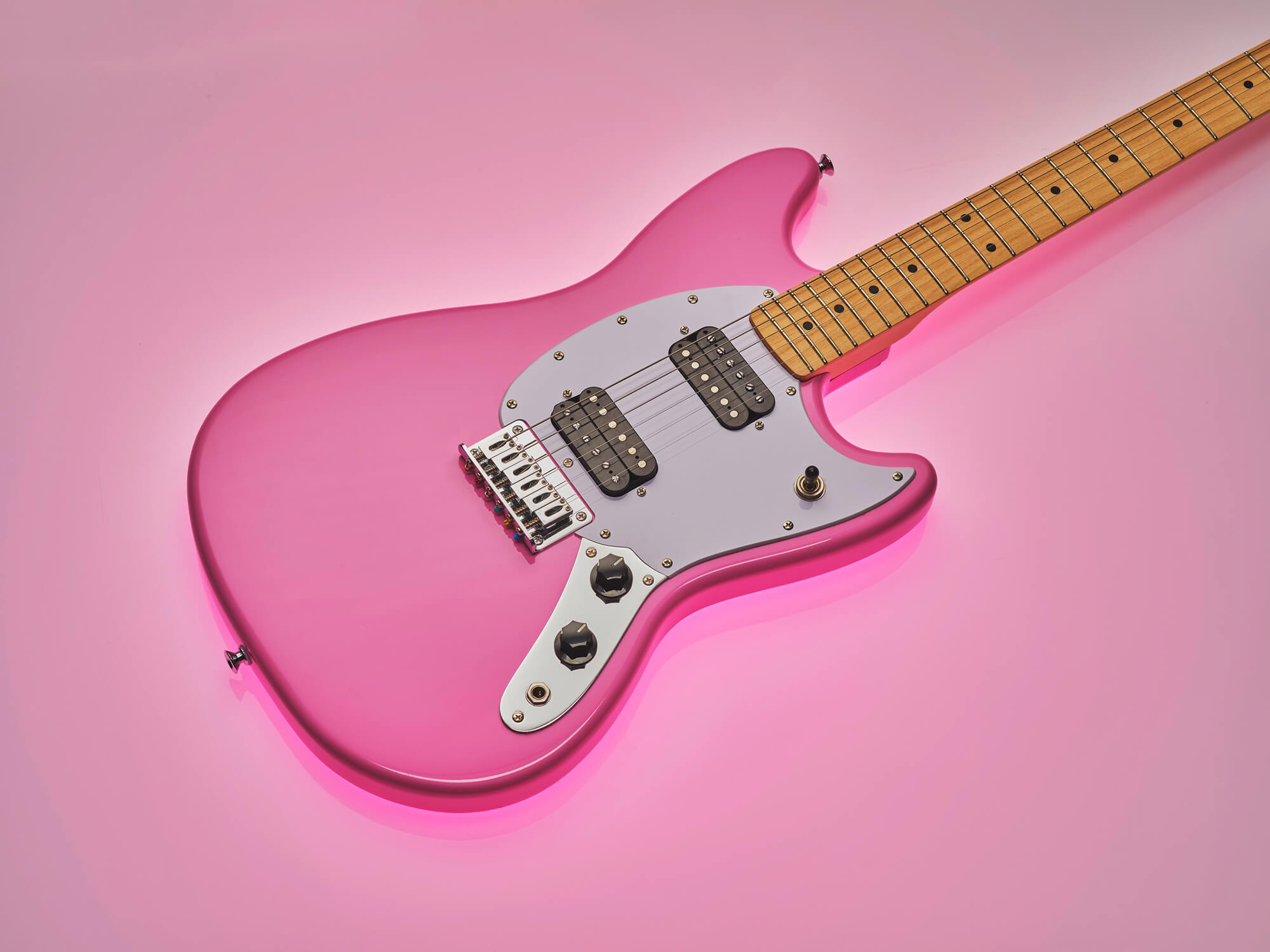
Squier Sonic Mustang HH. Image: Adam Gasson
Review Overview
Our rating
8
Our verdict
$199/£149, fender.com
It’s easy to forget that before Kurt Cobain made Fender Mustangs eternally cool, they were meant to be student instruments – the best beginner guitars that the Big F had made, and the first rung on the ladder for aspiring artists.
Nowadays of course, it’s just as common to see a Mustang around the neck of an arena-level star like Matt Healy or Ben Gibbard as you are a young kid taking lessons in the back of a guitar shop, but that broadened appeal just makes the need for an ultra-affordable Mustang in the Fender catalogue all the more evident.
For years, that slot has been filled by the Squier Bullet Mustang, but with 2023’s overhaul of the Squier range comes a new – if very familiar – contender. Enter the Sonic Mustang.
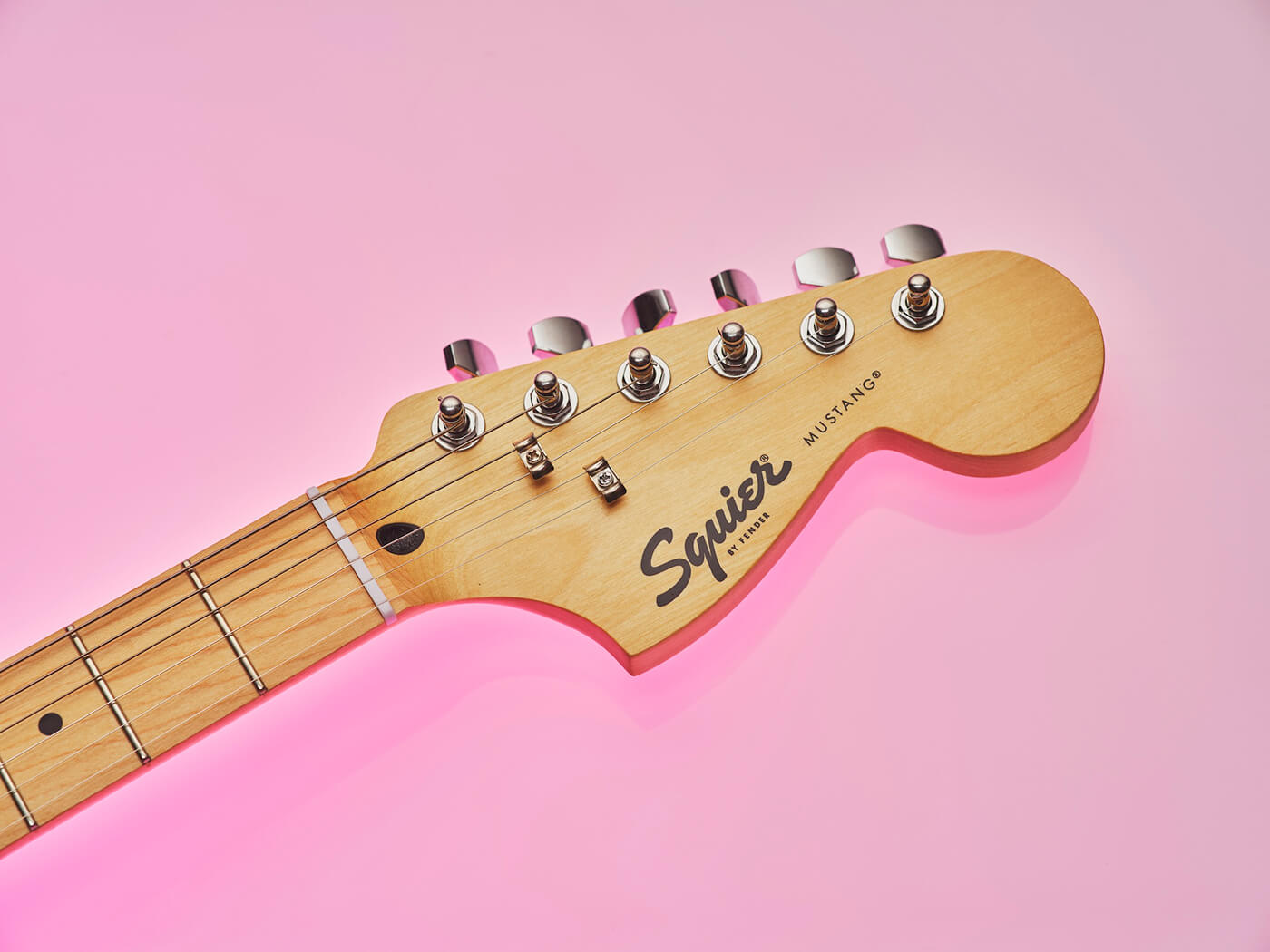
Why is a Mustang a great first guitar?
The Mustang’s heritage as a beginner’s guitar is part of the reason that it’s still such a great entry-level option in 2024. The guitar’s body is significantly smaller than even the already svelte charms of a Strat or Telecaster, with a narrow waist and small lower bout that means it should rest comfortably on the lap of younger players or those with smaller frames.
Now, if you’re on the tall and hefty side (hello!) then the Mustang’s scaled-down body can feel a bit toy-like and, when strapped on, can look faintly ridiculous. However, if you can get past that there are real benefits to playing a guitar that barely feels like it’s there. Like small-bodied acoustics, there’s something to be said for an instrument that just gets out of the way and doesn’t leave you with a sore shoulder after a couple of hours of playing.
Another hangover from the Mustang’s days as a student guitar is the scale length. For those that don’t know, a guitar’s scale length effectively refers to the length between the bridge and the nut (technically it’s double the distance between a guitar’s bridge and the middle of the 12th fret, but I digress).
In practice, a shorter scale length usually means that the frets are a little closer together. So, for example, a standard Fender scale length is 25.5 inches (650 mm) while most Gibson guitars are a shorter 24.75 inches (630 mm). The Squier Sonic Mustang, however, has a scale length of just 24 inches, meaning that the neck is a little more compact and condensed, which makes it easier for smaller arms and hands to get around.

What’s the difference between the Bullet and Sonic Mustangs?
On the surface, you’d be forgiven for thinking that the Sonic Mustang HH was effectively a rebadged (and it must be noted up-charged) Bullet given that they look cosmetically very similar – but there are clear differences.
Most notably, the neck on this Flash Pink version is all-maple, (the California Blue finish option still has a laurel fretboard) while underneath that wonderfully garish pink finish the body has been swapped from basswood to poplar. This is something that’s easy to miss on the spec sheet but should impact the tone given that basswood is traditionally regarded as an affordable mahogany alternative (with more of a bassy characteristic, hence the name), while poplar has more in common with alder and other more traditional Fender body woods, which are said to accentuate the mids and high frequencies.
The pickups too, are new – the old basic Squier set swapped out for a ceramic magnet version – but otherwise it’s as before with the same 9.5-inch fingerboard radius, single volume and tone controls and a three-way toggle switch.
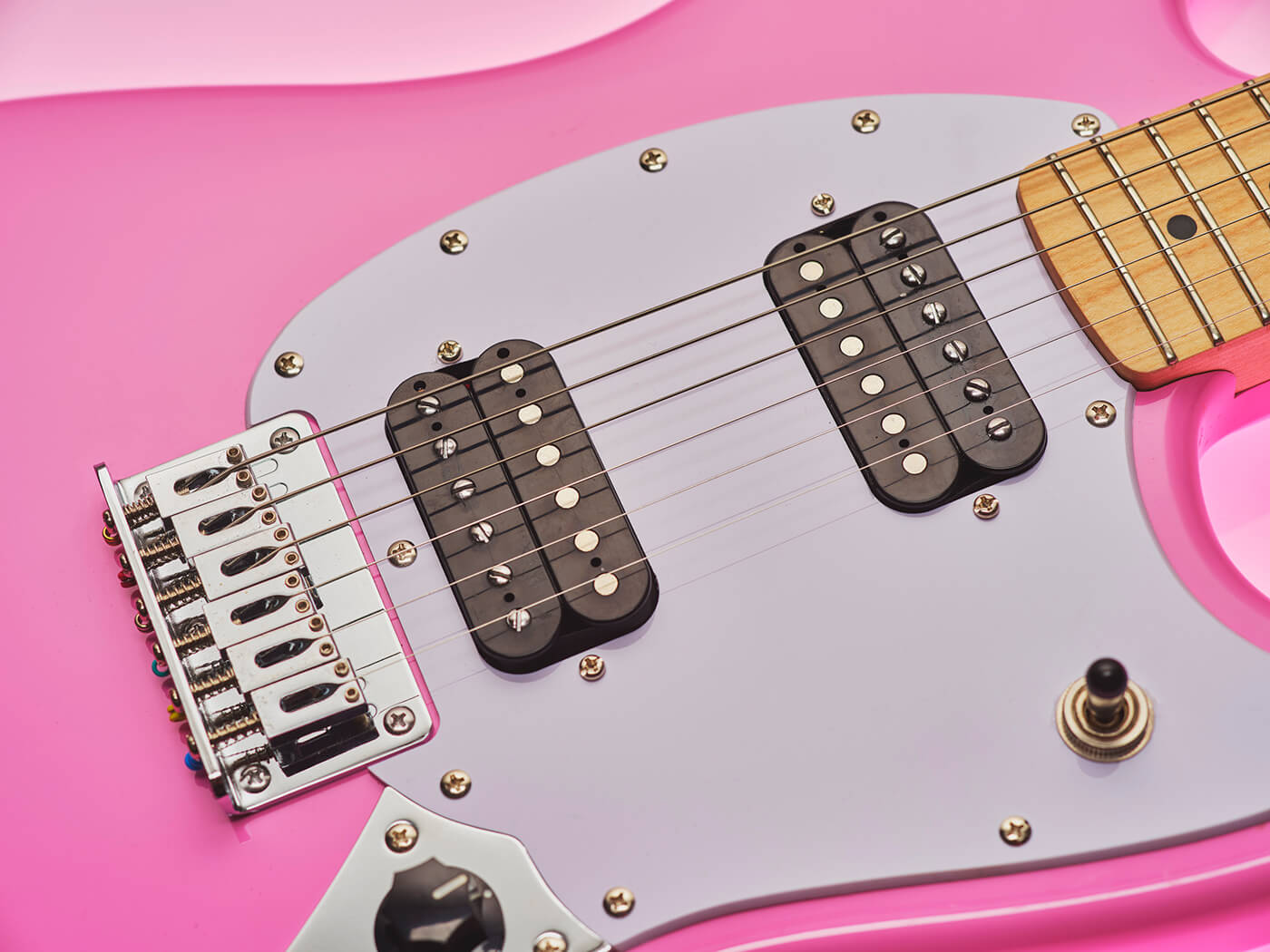
How does the Squier Sonic Mustang HH play and sound?
One of my most oft-repeated phrases when I’m talking to people about budget guitars these days is, “Imagine if this was your first guitar…” because it’s hard to deny that things have come a LONG way since we were struggling to get to grips with our Marlins, Encores or, in my case a Rockwood by Hohner that weighed about 11lbs.
While a shade under $200 might be a lot more than what I bought my first guitar for, it’s also worth remembering that every damn thing costs dramatically more now. $199 in 2024 is the equivalent of about $106 back in 1999…
With that in mind then, it’s worth noting that as an entry-level instrument, the Sonic Mustang HH really takes some beating. That C-shaped neck profile might be a little ‘generic’ in some eyes but as a gateway to electric guitar it’s a nice palmful, and the compact scale length makes chords and riffs a breeze.
The intonation and general setup are perhaps not as good as they could (or perhaps should) be – it’s notably not up to the impressive levels of the similarly priced Sonic Strat HSS reviewed last year. Some bends beyond the 12th fret choked out quite early, and while you can argue that such dusty end excursions are not what this guitar was designed for, it’s still a pity.
The two humbucking pickups are nicely balanced, though sonically they’re definitely more aimed at the grungey/punky end of the spectrum. Again, this is perhaps understandable given the likely target market, but they only really show off their best with a fair bit of gain on tap – if you’re looking for more restrained clean or indie-rock tones, the SS version might be a better bet.
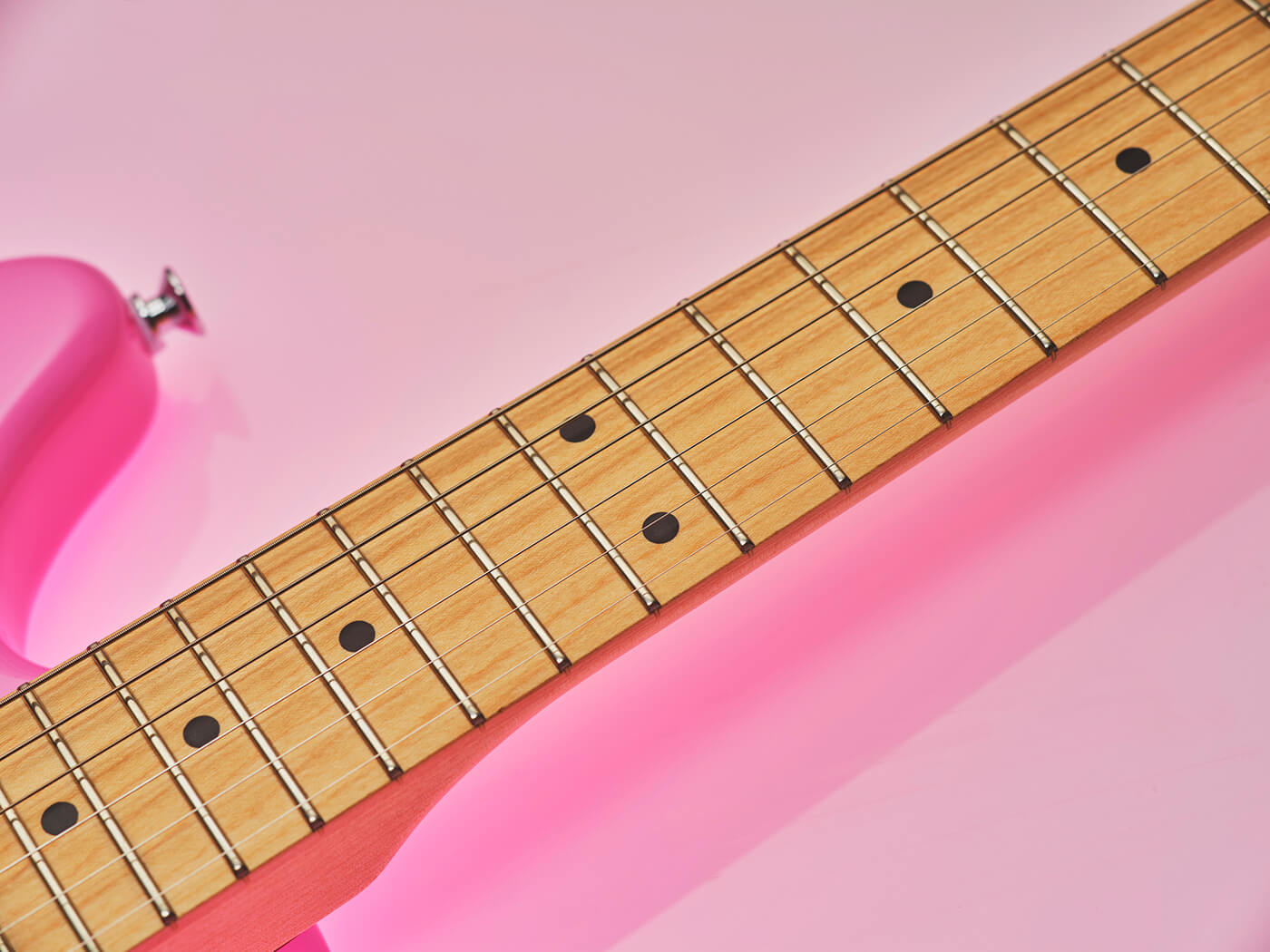
Is the Squier Sonic Mustang HH the best entry-level guitar out there?
The answer to this question is a slightly odd one, as it really depends on where you’re reading this – if you’re in the UK/Europe, the Mustang is the cheapest full-size guitar that Squier currently produces (a title it shares with the single-pickup Strat and Tele H models).
For some reason, in the USA this isn’t the case – the Mustang is the same price as all the other guitars in the Sonic range, including the more versatile (and better put together in our experience) Strat and Tele models.
That said, the smaller body and shorter scale still make this an ideal first proper guitar for players with smaller bodies, especially for those graduating from Loogs and other guitars designed especially for children.
There’s also the small matter of the look of the damn thing, and this is the most affordable and accessible route to a Fender offset you can get – for many players, that will quite rightly be the deciding factor.
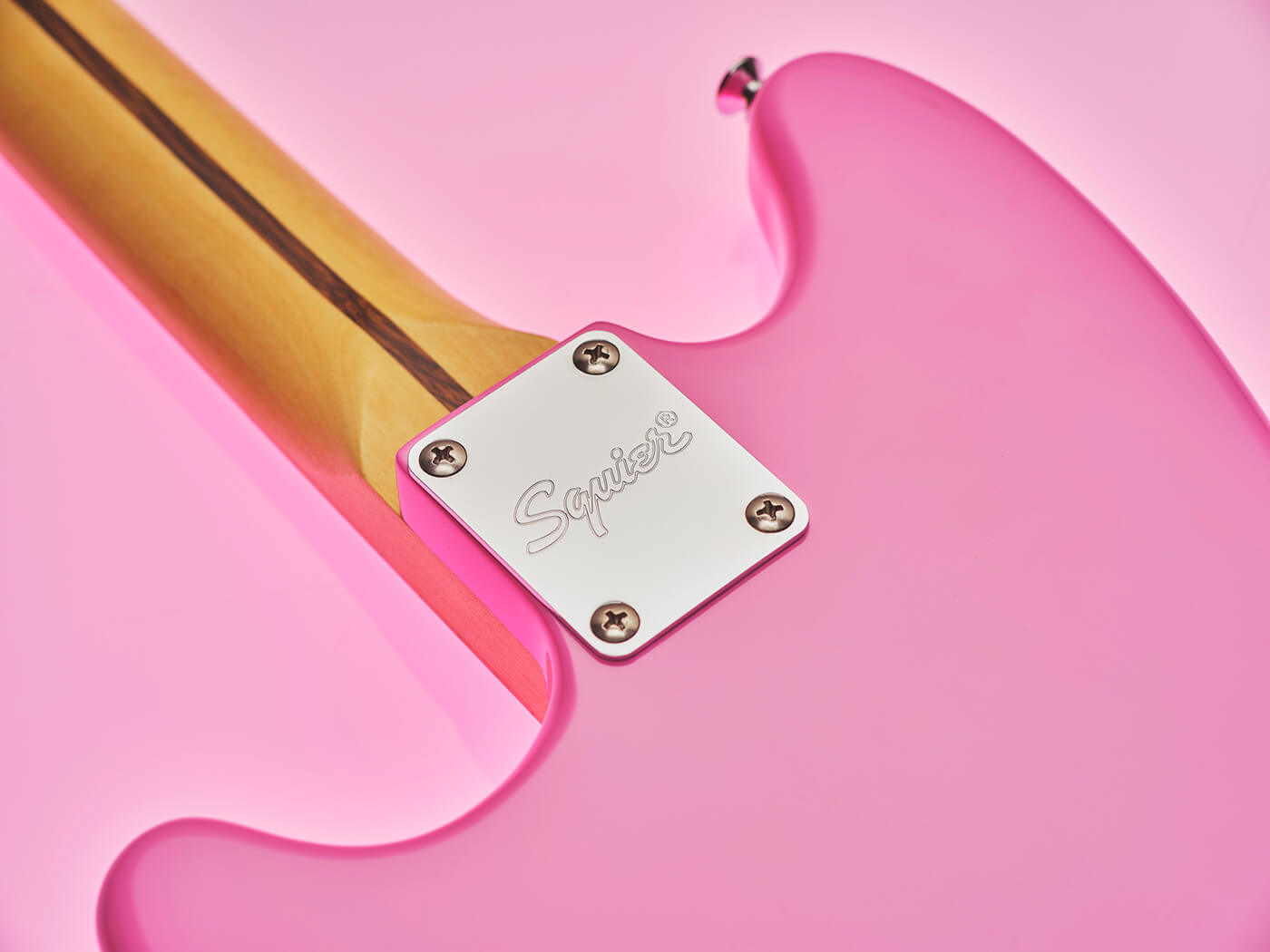
Squier Sonic Mustang HH alternatives
You’re not short of options in the entry-level world, as our best affordable guitars guide can attest, but finding something as cheap as the Mustang. If you still want offset vibes but are after a guitar more squarely aimed at kids, the Squier Mini Jazzmaster ($189.99/£155) is worth a look, as is the Jackson JS1X Dinky Minion ($179.99/£169) if you want something a bit more shreddy. If you’re just after a really good guitar for the lowest price possible, Squier’s Sonic Stratocaster HSS ($199/£159) is versatile, great looking and well worth the money.
